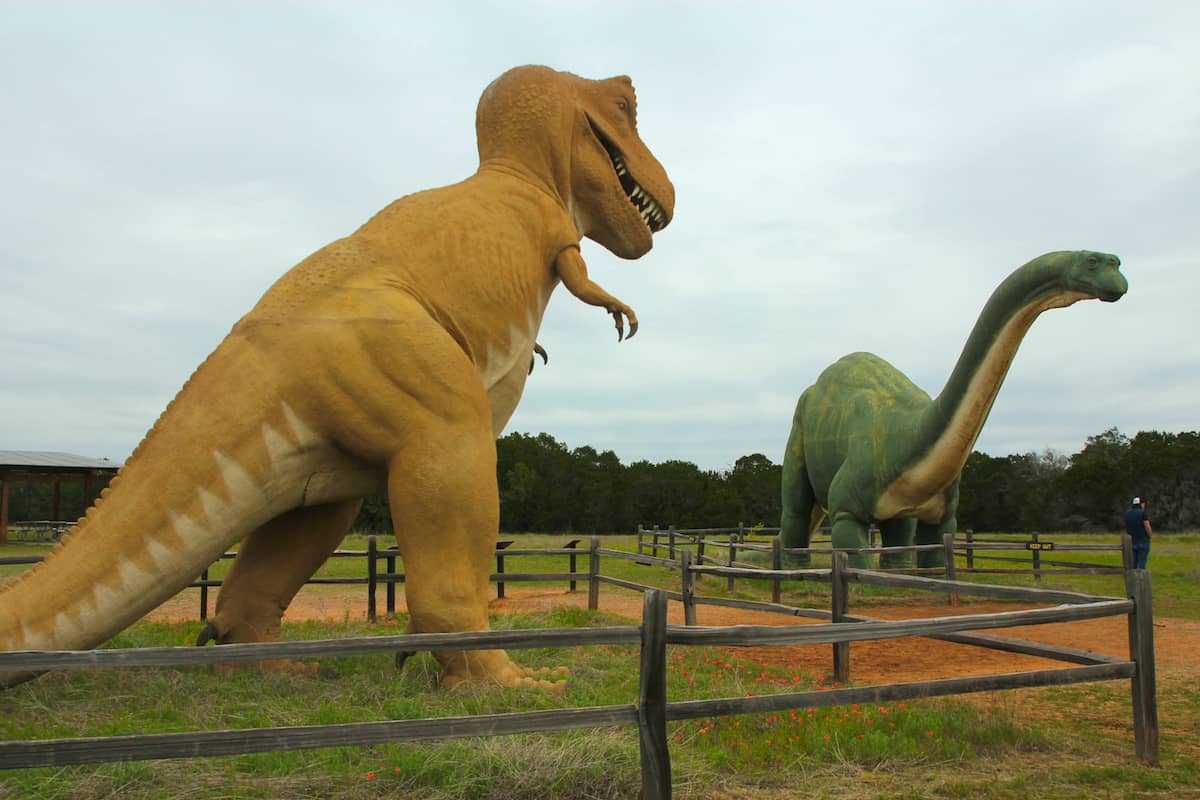
It might be the short arms of the T-Rex or the long neck of the Apatosaurus, but dinosaurs are fascinating to many. With a basic knowledge of paleontology and a map, you can go dinosaur hunting in Texas. The dinosaurs might be long gone, though they leave their footprints and skeletons all over the state. Texas is in a hot zone for dinosaur footprints and Ice Age skeletons. Here are the top places to find dinosaurs in Texas.
Top Places to Find Dinosaurs in Texas
Glen Rose
Dinosaur Valley State Park
Dinosaur World
Waco Mammoth National Monument
Heritage Museum of the Texas Hill Country
Perot Museum of Nature and Science in Dallas
Fort Worth Museum Science and History
Dinosaur Science Museum and Research Center
Houston Museum of Natural Science
Witte Museum in San Antonio
Mayborn Museum Complex
Texas Science and Natural History Museum
Brazos Valley Museum of Natural History
Leander Dinosaur Tracks
Government Canyon State Natural Area
Austin Nature Center
Why Look for Dinosaurs in Texas
Dinosaurs are cool. If you have a dino-loving kid, you will be on the hunt to expand their curiosity.
Dino-loving kids devour information on their favorite species and are a fountain of information. Pint-sized paleontologists want to explore areas with dinosaurs, both in museums and actual sights with bones or tracks.
The First Dinosaur Discoveries
Ancient people immortalized footprints in their pictographs in the Utah area, suggesting they had found dinosaur footprints. Though the official discovery of dinosaurs was in England in the 1820s.
Footprints were found in Connecticut soon after, in the 1830s. However, the real excavation didn’t start in the U.S. until the end of the 1800s with the Bone Wars. Two scientists and their scientific discovery teams raced to the Rocky Mountains and discovered over a hundred new species between the two competing crews.
Then, the natural museums got into the game and formed their own dig teams. Soon, scientific dig teams dispersed across the continent to discover dinosaurs and then filled museum halls with their discoveries.
Best Cave Tours in Texas
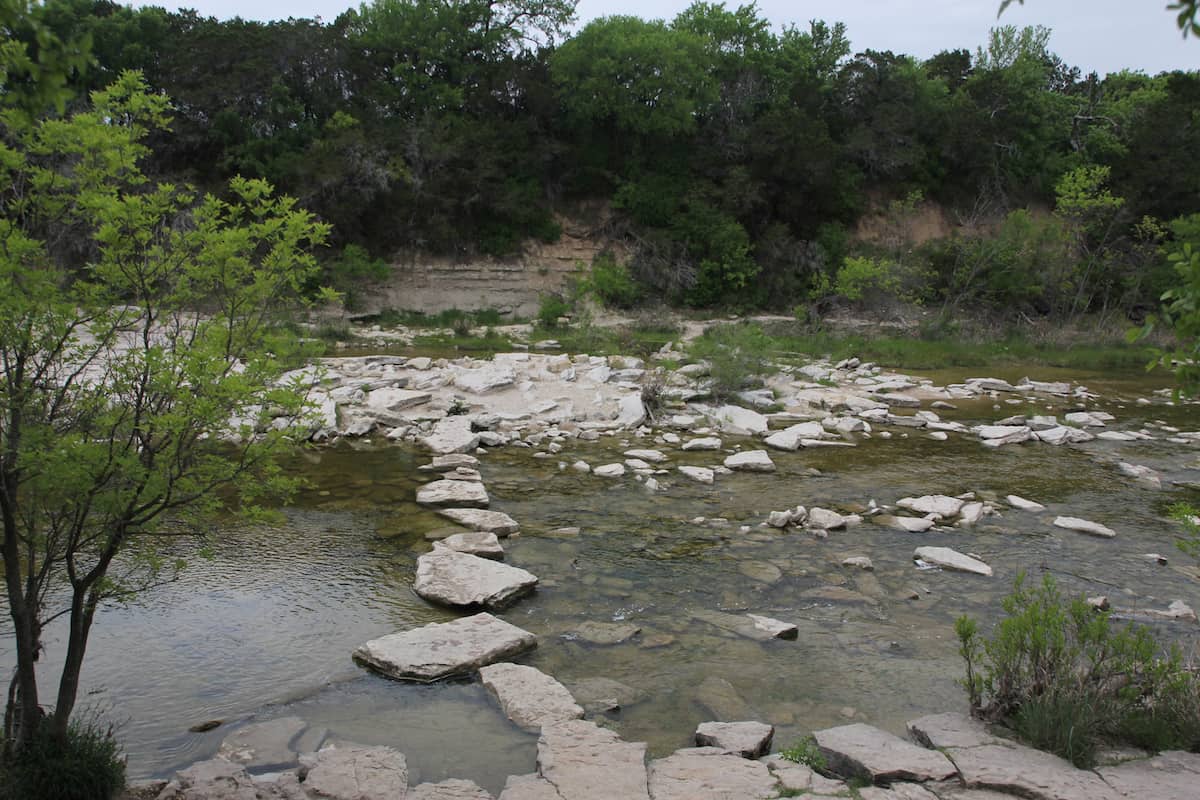
Where to Find Dinosaurs in Texas
Texas is a hotbed of dinosaur tracks and bones. With sites scattered across the State, families have their choice of parks, preserves, and even museums.
Several Texas museums offer castings of discoveries found in the state. A museum visit is a great introduction to dinosaurs in Texas.
Glen Rose—Dinosaur Capital of Texas
In 1909, a nine-year-old boy named George Adams uncovered a three-toed track embedded in limestone in the Paluxy River. Young Adams told his school principal, then loaded up his schoolmates and went on a field trip to see for themselves.
It didn’t take long before local rock hunters started collecting, maybe selling, the oddities. The rock dealers headed to trading posts where they sold their finds.
In 1936, New York City’s American Museum of Natural History dispatched Roland Bird to Glen Rose, Texas, to search for the tracks after one was found at a New Mexico Trading Post. When he arrived in town, Bird spotted a dinosaur footprint preserved in the rock used in the Somervell County gazebo in Glen Rose.
Local Glen Rose residents took Bird to the nearby Paluxy River to see more prints. In the shallow water, Roland Bird spotted more dinosaur footprints.
Officially, the footprints are from theropods, meat-eaters that walked on two legs, probably the Acrocanthosaurus. Bird went on to find other footprints in the Paluxy River from a sauropod, a four-legged plant eater. In addition, Bird found a collection of tracks of multiple animals demonstrating how they walked and lived.
After the discovery, the American Museum of Natural History teamed up with the University of Texas for an official excavation. Funded by the Works Progress Administration, it began in 1940.
Top Sites in Glen Rose
Head to the Somervell County Courthouse in Glen Rose for two footprints ringing the courthouse square, including the one in the gazebo. The other footprint is outside the Somervell County Museum at 101 Vernon St.
Dinosaur World features over 100 life-sized dinosaur replicas set among the landscape on a walk. Located at 1058 Park Road 59 in Glen Rose. Admission.
Glen Rose is about 50 miles southwest of Fort Worth.
Top Wildflower Drives in Texas
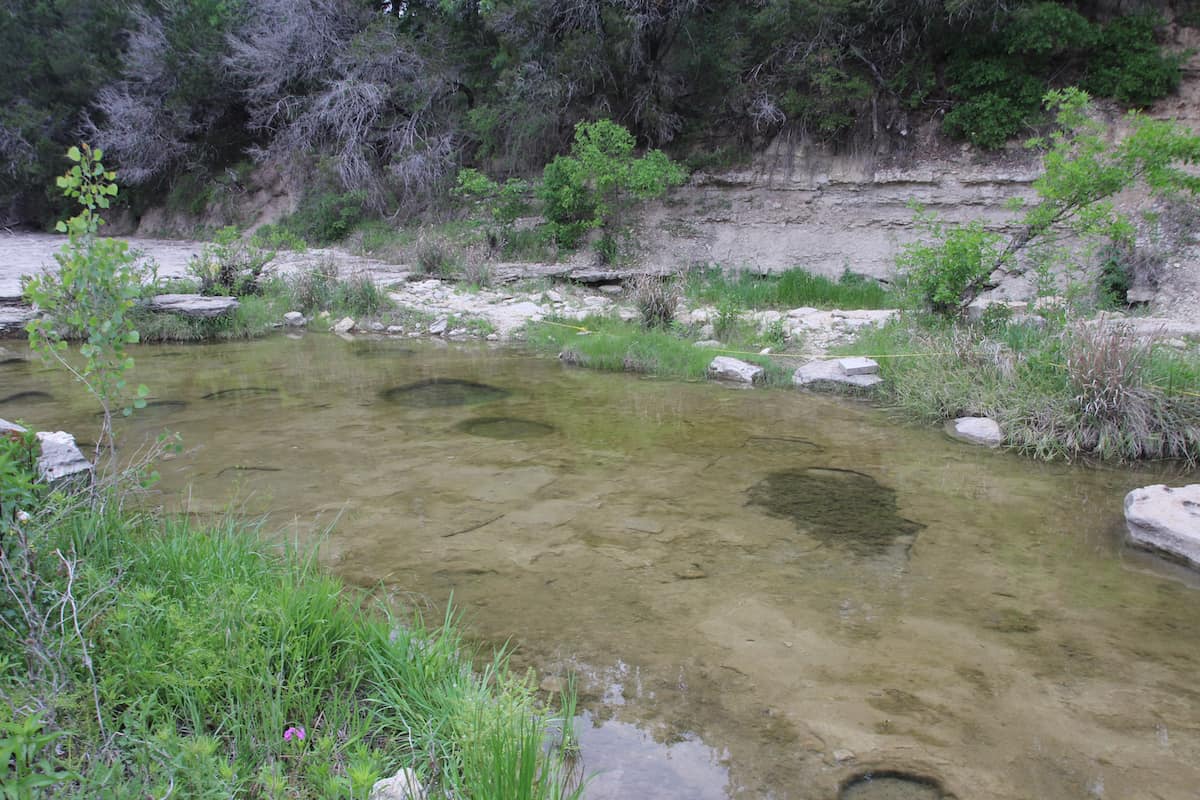
Dinosaur Valley State Park
With 1,500 acres alongside the Paluxy River, this Texas State Park is also a National Natural Landmark. Purchased in 1968, Dinosaur Valley State Park opened to the public in 1972. The big draw is the dinosaur footprints in the river, though the park offers camping, picnic tables, and a playground.
Upon entering, it’s impossible to miss Sinclair Oil dinosaurs from the 1964-65 World’s Fair in New York. Your dino lovers will want to get a pic with the mighty Tyrannosaurus Rex and the long-necked Apatosaurus.
After the initial discovery in 1936, Peter Rose of Southern Methodist University determined that the sauropod was a new species. Named the Paluxysaurus jonesi, it was considered 60 to 70 feet long and 12 feet tall with an enormous neck and tail. In 2009, it was named the official dinosaur of Texas.
For dinosaur track viewing, bring water shoes or rubber boots to five sites on the Paluxy River. The official Dinosaur Valley State Park map provides exact locations.
Inside Dinosaur Valley State Park, you can find 44 campsites with electricity. The park also has 20 miles of hiking trails. The park offers track viewing updates since water flow can affect the track’s visibility.
Located at 1629 Park Road 59, five miles west of Glen Rose. Adult admission (12+) is $8. Day-use and camping reservations are recommended since this is a popular state park.
Dinosaur World
This roadside attraction has all the scary dinosaurs with 150 life-size replicas for visitors to see. Catering to families, Dinosaur World also offers a playground, a dino pit and more.
Located at 1058 Park Rd 59 in Glen Rose. Ad Open daily from 9 a.m. to 5 p.m. Tickets start at $17.95.
Weekend Getaway to Fredericksburg
The Heritage Museum of the Texas Hill Country
These 110 million-year-old tracks are a marvel, with over 200 dinosaur prints in 28 trackways. Scattered over three different trails, visitors can learn more about Texas dinosaurs and see the tracks. To see the tracks, visitors take a docent-led tour.
Located at 4831 FM 2673 in Canyon Lake. Open Wednesday to Sunday from noon to 4 p.m. Adult admission is $7.00, and kids (4 to 12) are $5.
Don’t Call Mammoths Dinosaurs
Old, yet not dinosaur old, or even dinosaurs. Mammoths are prehistoric animals from the Ice Age that started 2.5 million years ago. Dino kids will tell you that most dinosaurs share anatomical features in their hip bone structure, and the mammoths are unrelated.
In Texas, glaciers didn’t cover the land during the ice age. Columbian Mammoths, Texas natives, were the larger and less furry of the North American species. The more popular species, the woolly mammoths, lived further north.
About 65,000 years ago, a nursery herd of mammoths died in the ravine. Adult females, along with their young, might have gotten caught in a flash flood. This area also trapped other prehistoric animals in the mud, preserving them.
In 1978, Paul Barron and Eddie Bufkin, both in their early 20s, stumbled upon a bone sticking out of the ground. Digging it up, they took their find to nearby Baylor University. Soon after, a discovery dig was organized. During the dig, some of the bones were encased in plaster jackets and moved to Baylor University for further study. Other discoveries were left in situ or in place in the creekbed.
Guide to Texas Swimming Holes
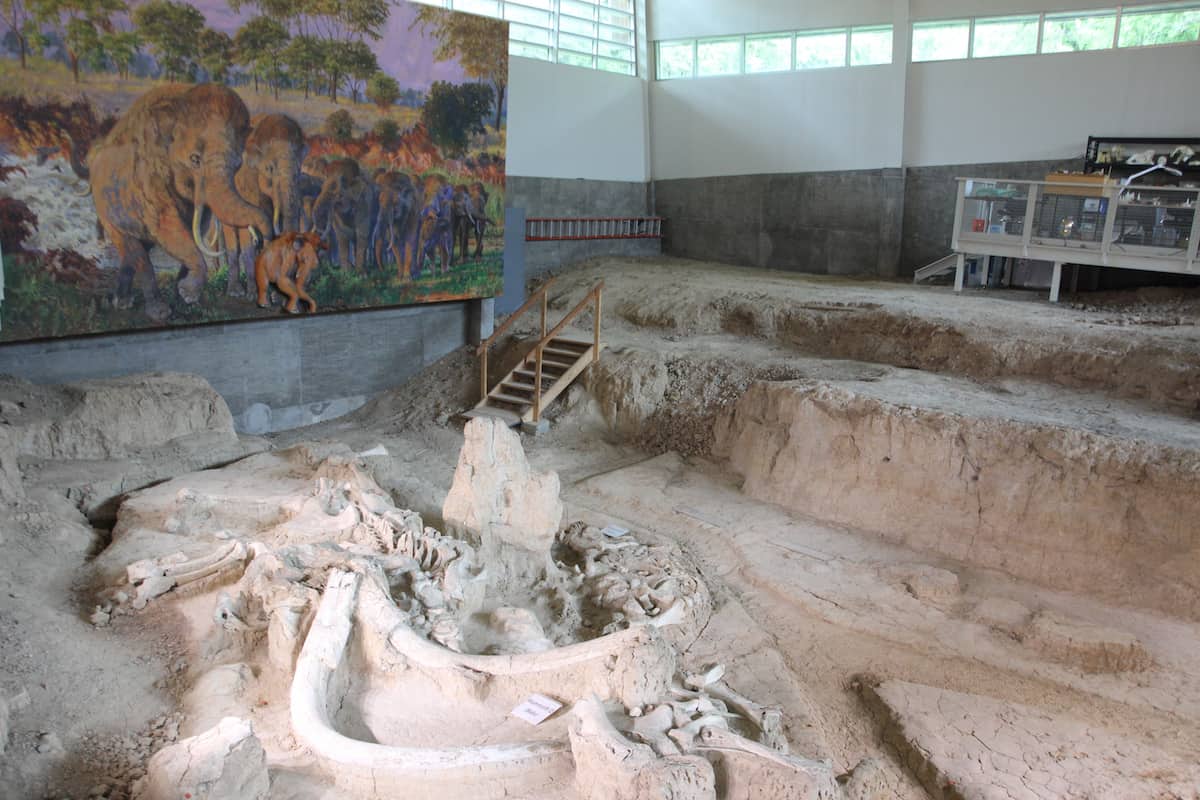
Waco Mammoth National Monument
Recently declared a national monument, see the nursery herd of mammoths as they were discovered, one of the few sites in the U.S. that are enclosed in a climate-controlled structure. In addition to the mammoths, find a camel bone and a saber-toothed cub tooth.
Start at the National Park Service Visitor Center, then stroll through native vegetation to the dig shelter. With elevated walkways, you can see the bones from above, with archeological markers still in place. It’s a must for budding paleontologists.
Located at 6220 Steinbeck Bend in Waco, it is open from 9 a.m. to 5 p.m. daily. Tickets are required to access the dig shelter; adult admission is $5, and kids’ admission is $3.
Top Things to Do in Waco
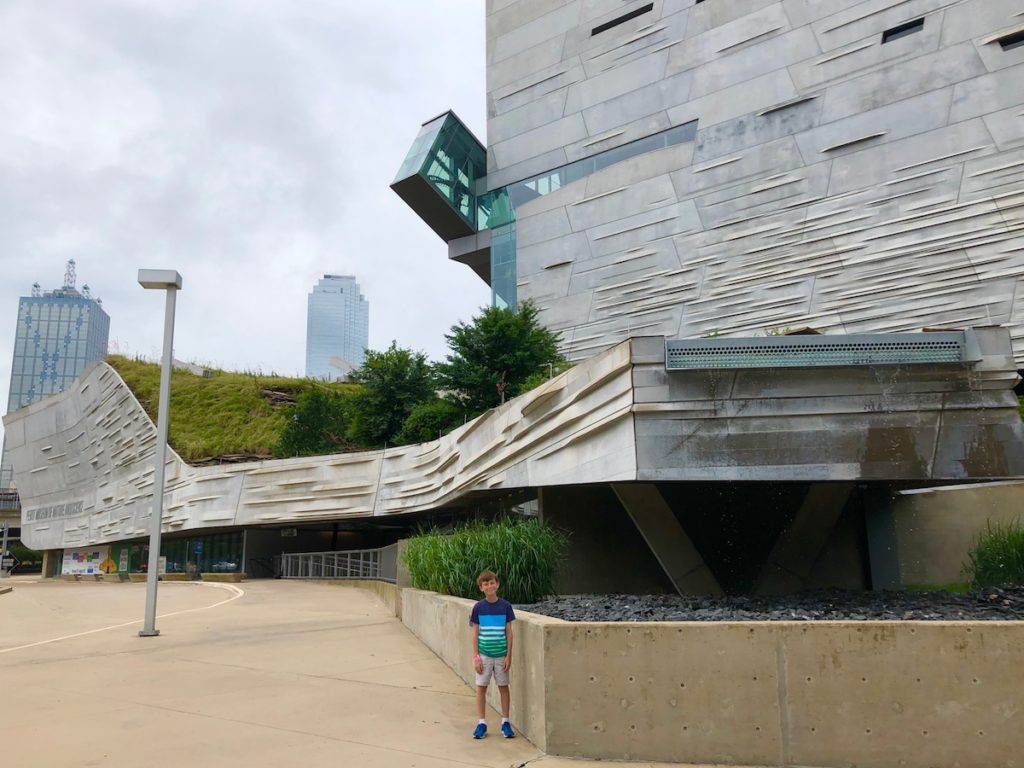
Best Museums with Dinosaurs in Texas
Always a stable, find dinosaur exhibits in most urban centers in Texas from H-town to the Big D. Get towering replicas of skeletons and dinosaur digs for the kids.
Perot Museum of Nature and Science in Dallas
Perot Museum of Nature and Science boasts Texas’s Alamosaurus and the favorite T. Rex in the T. Boone Pickens Life Then and Now Hall.
It is located at 2201 N. Field Street in Dallas. Open daily from 10 a.m. to 5 p.m. (11 a.m. on Sunday). Adult admission is $25, and kids are $15. A timed entry reservation is required.
Fort Worth Museum Science and History
Visitors will find a Paluxysaurus Jonesi at the Fort Worth Museum of Science and History. In addition to the skeleton, there is a dino lab and a dino dig.
Located at 1600 Gendy Street in Ft. Worth. Open Tuesday to Saturday from 10 a.m. to 5 p.m. and Sunday from noon to 5 p.m. Adult admission is $16, and kids (3 – 11) are $12.
The Dinosaur Science Museum and Research Center
This center boasts one of the largest collections of dinosaur fossils in the U.S., with over 30,000 fossils in its collection.
Located at 113 W Magnolia St, in Keene. This facility is open during the summer, Monday to Thursday, from 9 a.m. to 5 p.m. and located on a university campus. Adult admission is $5 and kids (4 – 12) are $3.
Top Things to Do in Dallas
Houston Museum of Natural Science
The Houston Museum of Natural Science put its dinosaurs in action in the Morian Hall of Paleontology. Find the skeletons in pursuit or running from the meat eaters.
Located at 5555 Hermann Park Dr. in Houston. Open daily during the summer from 9 a.m. to 6 p.m., 5 p.m. for the rest of the year. Adult admission is $25, and kids (3 to 11) are $16.
Witte Museum in San Antonio
The Witte Museum features the Acrocanthosaurus, whose footprints were discovered in the nearby Government Canyon State Natural area. You can also see a T. Rex and discover a bone in the Dino lab. There, you can see a giant ancient alligator, the Deinosuchus.
Located at 3801 Broadway in San Antonio. Open Monday to Saturday from 10 a.m. to 5 p.m. and Sunday from 10 a.m. to 5 p.m. . Adult admission is $16, and kids (3 to 12) are $11.
Top Places to See in San Antonio
Mayborn Museum Complex
From Baylor University’s collection, learn more about prehistoric Texas in Strecker’s Cabinet of Curiosities. In addition the Mayborn Museum Complex offers an exhibit on the Cretaceous Sea, which covered much of Texas.
The Mayborn Museum features a display of the Waco Mammoth National Monument. See a casting of the bones. found on that site.
Located at 1300 S. University Parks Dr. in Waco. Open Monday to Saturday from 10 a.m. to 5 p.m. and Sunday from 1 p.m. to 5 p.m. Adult admission is $10, and kids (2 to 12) are $8.
Texas Science and Natural History Museum
Learn more about Texas dinosaurs and fossils in the Hall of Geology and Paleontology. The Great Hall offers treasures like the Quetzalcoatlus Northropi, a Texas Pterosaur discovered in West Texas by the University of Texas.
Located on the University of Austin campus at 2400 Trinity St. in Austin. Open Tuesday to Saturday from 10 a.m. to 5 p.m. and Sunday from 1 p.m. to 5 p.m. Adult admission (13 and up) is $10, and kids (5 to 17) are $6.
Guide to Bastrop in Central Texas
Brazos Valley Museum of Natural History
In the smaller museum in Bryan, visitors will find The Ice Age mural along with The Age of Dinosaur exhibit. With a full-size cast of a Pteranodon skeleton and fossils from a crested Nyctosaurus. It also has a rare nodosaur fossil replica. This natural history museum is a good size for smaller children as it’s not overwhelming.
Located at 3232 Briarcrest Drive. Open Tuesday to Saturday from 10 a.m. – 5 p.m. Adult admission is $5, and kids are $4 (4 to 17).
Other Places with Dinosaur Tracks
Leander Dinosaur Tracks
The Leander Dinosaur Tracks are in a creekbed near U.S. Highway 183. Parking is located near 601 S. Gabriel Dr. in Leander, Texas. Free to enter.
Government Canyon State Natural Area
West of San Antonio, visit a 12,000-acre natural preserve with 40 miles of trails along with camping. Take the Joe Johnston Route for 110-million-year-old dinosaur tracks.
Located at 12861 Galm Rd. Adult admission (12+) is $6. Open from Friday until Monday from 7 a.m. to 10 p.m. Adult admission is $6, and kids 12 and younger are free.
Top Spots to Explore in Salado
Play with Dinosaurs
If you want to look for your own dino bones, there are places to do that in Texas, too.
Austin Nature Center
This beloved Austin attraction is found at the edge of Zilker Park. One of its favorite play areas is the Dino Pit. Outfitted with several skeletons, kids can use tools to uncover bones, just like a paleontologist.
Located at 2389 Stratford Drive. Open Monday to Saturday from 9 a.m. to 5 p.m. and Sunday from noon to 5 p.m. It is free to enter.

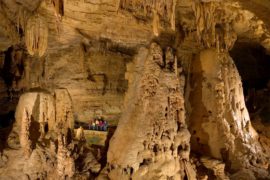
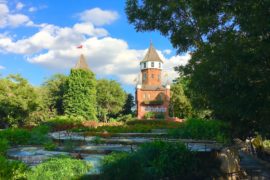

Comments are closed.